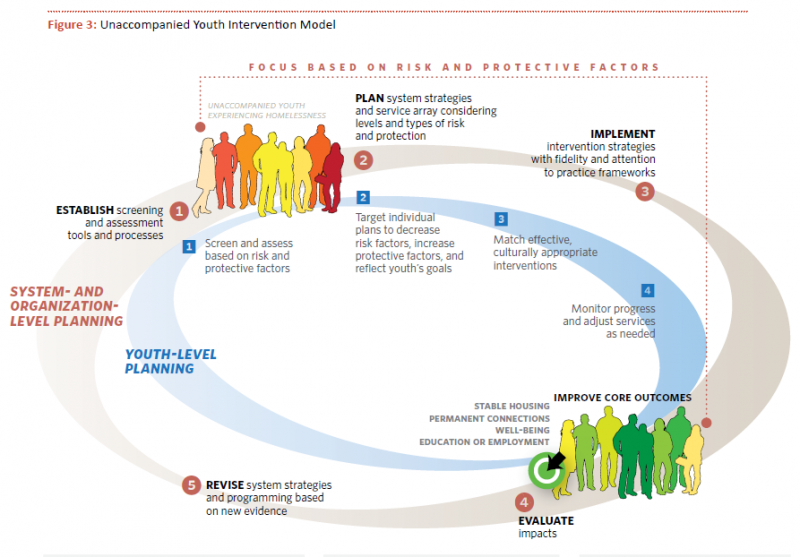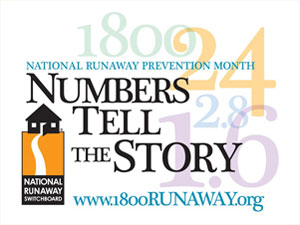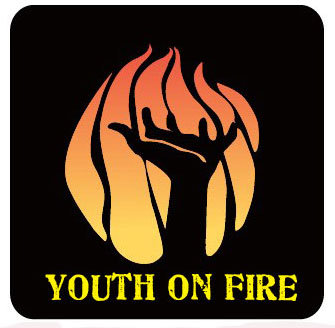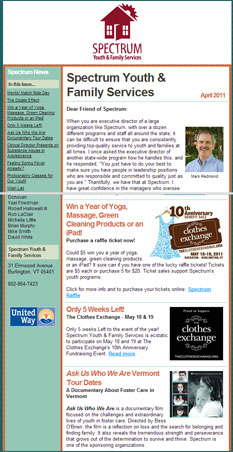The Beat
One of the objectives of the United States Interagency Council on Homelessness is to end youth homelessness by 2020. Here at NCFY, we want to help you understand how USICH aims to do that, in collaboration with federal, state and local government, and of course with programs that work directly with homeless young people.
A big step forward came in September when USICH unveiled a new “intervention model” for working with homeless youth who are on their own, apart from their families. Part of the 2012 amendment (PDF,2.17MB) to the Opening Doors strategic plan to end homelessness, the model is meant to harness what we know about homeless youth from research. What makes them more or less likely to succeed in school and life or to have problems? The model will enable youth workers to build “protective factors,” reduce “risk factors” and get young people these four important things:
- Stable housing
- Permanent connections with friends, family, teachers and others
- Well-being
- Education and employment
The illustration below, from the Opening Doors amendment, takes you through the steps of using the model.

Here’s how we think NCFY fits in to making the model something you, as a youth worker, can actually use (each of these points fits with the corresponding step in the graphic):
- We’re updating our popular list of assessment and screening tools for measuring mental health, substance abuse, and independent living skills in adolescents.
- We’ll keep summarizing the latest research on risks and protective factors among runaway and homeless youth.
- We’ll be expanding our coverage of evidence-based interventions that runaway and homeless youth programs across the country are using.
- We’ll continue writing about FYSB’s four outcomes for runaway and homeless youth and how you can help youth achieve them.
Stay tuned!
 Lashawnda Carter is Outreach Coordinator for the National Runaway Switchboard, an organization dedicated to keeping America’s runaway, homeless and at-risk youth safe and off the street. Every November, NRS co-sponsors National Runaway Prevention Month with the National Network for Youth. As part of its outreach efforts, NRS has held a National Runaway Prevention Month Community Contest since 2006.
Lashawnda Carter is Outreach Coordinator for the National Runaway Switchboard, an organization dedicated to keeping America’s runaway, homeless and at-risk youth safe and off the street. Every November, NRS co-sponsors National Runaway Prevention Month with the National Network for Youth. As part of its outreach efforts, NRS has held a National Runaway Prevention Month Community Contest since 2006.
Organizations send their entries to Carter, who passes them along to a committee. The committee judges entries based on how well their activities meet the goals of National Runaway Prevention Month:
- To raise awareness of the issues facing runaway youth,
- To educate the public about solutions and the role they can play in preventing youth from running.
We talked to Carter about the contest, and what organizations can do to use its momentum to stay in the spotlight all year.
NCFY: What makes a good campaign stand out?
CARTER: A good campaign raises the conversation. It lets people know what the statistics are – for example, NRS handles over 100,000 calls a year, but 1.6 to 2.8 million youth will run a year. It lets people know what resources are available, like calling NRS and other national partners. It encourages collaboration and partnerships.
NCFY: What makes a good campaign work?
CARTER: Utilizing partnerships. Collaboration. Resources: free resources, like the NRS online toolkit. People you already partner with, like a board member in an official office somewhere who can get a resolution or proclamation signed. Social media, which is free, effective, and can go viral.
The National Runaway Prevention Month section of our site has an entire listing of resources, like the Let’s Talk Curriculum, especially module 6, which is a 45-minute activity. There’s the Community Action Toolkit. We also have free and promotional materials they can order. If youth service providers need a display, for going to a school or another event, we can help them with that.
NCFY: How do organizations measure the impact of their November campaign?
CARTER: Most measure by how many pieces of material they passed out, or attendees at an event they had. If they have an e-newsletter or a website, they can measure based on opens and hits. So they use those different measurements to see how effective it is.
NCFY: How do they carry out that work throughout the year?
CARTER: Keep the conversation going. If you partner or join our Street Team you can go to malls, hit the street, pass out wallet cards, add the NRS banner to your website, and so on. As long as they focus on the two goals, and use the free resources, it’s the first step to building attention all year.
NRS receives funding from the Family and Youth Services Bureau to run the national communications system that connects runaway and homeless youth with their families.
 As evening call center supervisor at the National Runaway Switchboard, Diana Delia talks, emails or online chats with hundreds of teens and parents each year. She hears it all: Parents who don’t know where to turn to find a child who has run away, abused youth with nowhere to go. And in the past year or so, she says, NRS has increasingly been contacted by boys and girls who face constant bullying and mockery at school.
As evening call center supervisor at the National Runaway Switchboard, Diana Delia talks, emails or online chats with hundreds of teens and parents each year. She hears it all: Parents who don’t know where to turn to find a child who has run away, abused youth with nowhere to go. And in the past year or so, she says, NRS has increasingly been contacted by boys and girls who face constant bullying and mockery at school.
“It’s just too much, someone constantly on your back like that,” Delia says. “It’s about their looks or their weight – it always seems to add up to their looks.”
NRS takes a “non-directive” approach to working with youth who are in crisis. Staff and volunteers coax callers toward their own solutions, rather than telling them what to do. Call center personnel also work to empower youth and understand the trauma they may have experienced.
“It’s tough, because I can’t tell them just turn around and walk away,” Delia says. “I can’t tell them this will get better.”
Instead, Delia is supportive and tries to get youth to see that things can get better. Here are five things Delia says youth workers, parents, teachers and other concerned adults can do when a young person is being bullied.
1. Listen, and don’t minimize what they're going through. “It’s really important to pay attention to them because it’s really scary that kids are handling this in an extreme and final way,” Delia says, referring to recent highly publicized teen suicides that have been linked to school and online bullying.
2. Make them feel good that they are reaching out. “It’s probably hard for a lot of kids to reach out about getting made fun of,” Delia says. Tell them you’re glad they talked to you, and that you know it must have been a big step to do that. Remind them that the bullying is not their fault.
3. Encourage youth to think beyond the present. Delia might say, “What do they make fun of you for? Do you think that’s important? Next year when you graduate, will that be better or different?” The idea is to help them see how they can overcome the hard times they’re going through.
4. Get them to focus on things they enjoy. Ask what they like to do. If they like basketball, for example, encourage them to go out and play and meet people who might support, rather than harass, them.
“Make sure they have some self-esteem booster somewhere in their life,” Delia says.
5. Make sure youth know how to get help. Talk about strategies for staying safe and help the youth make a plan--and a backup plan--for dealing with the situation.
To reach the National Runaway Switchboard, dial 1-800-RUNAWAY.
With National Bullying Prevention Month winding to a close, we’ll soon be turning our attention to National Runaway Prevention Month, which is spearheaded by NRS every November. Stay tuned for more about what NRS, the Family and Youth Services Bureau and others are doing to keep young people safe and off the streets.
More From NCFY
"NCFY Recommends: Four Ways Youth-Serving Organizations Can Address Bullying"
 Before you read on, ask yourself: How are you feeling? What are your goals in reading this article? And who are your supports in achieving that goal?
Before you read on, ask yourself: How are you feeling? What are your goals in reading this article? And who are your supports in achieving that goal?
Those three questions launch every meeting—for youth and adults alike—at the growing number of U.S. youth programs that use the Sanctuary Model. A form of “milieu therapy,” the Sanctuary Model tailors a program's every operation to be responsive to a client's experiences with emotional or physical trauma.
“It’s basically about trying to make [trauma-informed care] a way of life in an organization,” says Dr. Liz Kuh, the medical director at Warwick House, a residential program in Warminster, PA, for children and youth with emotional and behavioral problems. Warwick House became “Sanctuary approved” in 2010, after an intensive three-year training process involving their entire staff and their clients.
Martha Tavantzis, director of treatment for another Sanctuary-approved residential program, St. Gabriel’s Hall in Philadelphia, says Sanctuary has helped her program improve measurable outcomes like retention and graduation rates. But the greatest change has been more subtle.
“Things are calmer and better and kids are engaged right from the get-go,” she says. “And staff have that knowledge base to help with emotional management. They feel more in control and not as hopeless.”
Focus on Trauma
Tavantzis points out that many youth workers come from the same troubled backgrounds as the young people they serve, and even those that don’t can be powerfully affected by the suffering they see young people endure.
“Our clients come from some of the most violent neighborhoods and schools in the country,” she says. “And as staff, we’re also human beings. This model allows us to think about how to do our work in a way where we stay sane and continue to be helpers.”
Tavantzis says Sanctuary does more than help individuals heal. It enables staff and youth to work together to create a healing community. When the mother of a St. Gabriel’s resident was murdered, about a year after the organization became approved, Tavantzis and her staff understood that the event was going to trigger not just the young man who lost his mother, but every young person in the Hall who grew up around similar violence. So while the young man was being comforted, other staff and residents stood up to lead community meetings and talk about the loss.
Stages of Implementation
Bringing Sanctuary to an organization requires a fairly serious commitment of money, time and staff. Implementing the model—including ongoing trainings, collaboration with a Sanctuary consultant, and leadership guidance—typically costs between $65,000 and $75,000 over three years. And getting Sanctuary approval has a few stages:
- An initial meeting of a steering committee made up of five program staff from all areas of the organization.
- A year and a half of meetings, trainings and discussion, focusing on the model’s key values and particularly the Seven Sanctuary Commitments to ideals like “Nonviolence,” “Open Communication” and “Growth and Change.”
- Another year and a half during which youth are taught about trauma theory and introduced to the same trainings as staff, in order to make sure that the Sanctuary ethos is known and practiced at every level of the organization.
Kuh says there’s no shortcut for changing an organizational culture. “Sanctuary has helped us shift away from needing to assert authority and make sure the kids stay in line, to a much more relational approach to caring for the kids.”
 When young people are homeless and still in school, the cafeteria may be their most reliable source of nutritious meals. As a youth worker, you may or may not know this next fact: Homeless youth served by programs with Runaway and Homeless Youth Act grants from the Family and Youth Services Bureau, as well as migrant youth, foster youth, and homeless youth vouched for by their school district’s homeless liaison can qualify for free school lunches without having to fill out a single form.
When young people are homeless and still in school, the cafeteria may be their most reliable source of nutritious meals. As a youth worker, you may or may not know this next fact: Homeless youth served by programs with Runaway and Homeless Youth Act grants from the Family and Youth Services Bureau, as well as migrant youth, foster youth, and homeless youth vouched for by their school district’s homeless liaison can qualify for free school lunches without having to fill out a single form.
The National Center for Homeless Education’s new brief, “Access to Food for Homeless and Highly Mobile Students” (PDF, 559KB), explains what youth workers and school administrators can do to make sure young people receive the free meals they’re eligible for.
The brief also answers frequently asked questions, like can a homeless young person be kept from graduating because they haven’t paid their cafeteria bill? (The answer: No.)
The brief was published as part of the center’s Interagency Collaboration Series with support from the Center on Budget and Policy Priorities, the Food Research and Action Center and the National Association for the Education of Homeless Children and Youth.
More From NCFY
"NCFY Recommends: Get the Facts About Food Stamps and Homelessness"
"Ask NCFY: Nutrition Programs Can Help Homeless Youth and Young Moms"
"Understanding the McKinney-Vento Homeless Assistance Act of 2001"
 For most adolescents, online social networking is another way to talk to the friends and family that they see every day. But for runaway and homeless youth, texting, Facebook and other social media can be important ways to stay in touch with friends and family who are slipping away just when they are most needed.
For most adolescents, online social networking is another way to talk to the friends and family that they see every day. But for runaway and homeless youth, texting, Facebook and other social media can be important ways to stay in touch with friends and family who are slipping away just when they are most needed.
Researchers are starting to believe that those virtual relationships – if healthy – may exert a powerful positive influence, helping youth to make better decisions and avoid the most harmful aspects of street life. Other research shows that the longer a young person stays on the street, the more risks they tend to take with drugs, unsafe sex and crime. Their chances of suffering from depression and other mental health problems grow quickly. Relationships with other street youth tend to make matters worse.
A series of recent studies from the University of Southern California School of Social Work suggests that youth workers might consider encouraging homeless youth to connect and stay connected to friends and family from home using cell phones and over social media. Such connections, they found, may help youth avoid depression, drug use and HIV.
Good Ties to Home
The mental health study is unique in its finding that when youth maintain relationships with old friends and family via online social networks, they may be protected against the unhealthy influences of street life. The majority of the 136 young people surveyed said that while getting online can be hard, using social media is key to maintaining connections to family and friends.
Using the same sample of homeless youth as the mental health study, the substance use study looked more closely at whether the people to whom homeless youth were connected – both back home and on the street – used drugs. Youth with more connections to non-drug-using home-based peers used drugs less than those with more ties to drug-using homeless peers. The writers suggest that peer-based prevention programs for homeless youth should use social networking to help them stay in touch with good influences outside of their face-to-face networks.
Frank Talk Online
Relationships to home may not be the only way to encourage positive behaviors over social media. A third study found that homeless young people were more willing to talk about HIV prevention on social media if they were recruited by other homeless youth, either face to face, or by being “friended” on Facebook or MySpace. While more research needs to be done to see if prevention efforts using social media actually change behavior, the researchers were encouraged that homeless youth were willing to talk about healthier behavior with their trained homeless peers.
Read the Articles
"Homeless But Connected: The Role of Heterogeneous Social Network Ties and Social Networking Technology in the Mental Health Outcomes of Street-Living Adolescents" (abstract). Community Mental Health Journal, E-pub, 2011.
"Social Networking Technology, Social Network Composition, and Reductions in Substance Use Among Homeless Adolescents." Prevention Science Vol. 12 No. 1, March 2011.
"Mobilizing Homeless Youth for HIV Prevention: A Social Network Analysis of the Acceptability of a Face-to-Face and Online Social Networking Intervention" (abstract). Health Education Research, Vol. 27, No. 2, April 2012.
 We've been marking National Domestic Violence and National Bullying Awareness Months this October. Many homeless youth have experienced all sorts of violence, and programs that serve them are responding by using "trauma-informed" approaches. We're reprinting this article about how one youth-serving organization made itself a safer space for young people who've experienced violence and trauma.
We've been marking National Domestic Violence and National Bullying Awareness Months this October. Many homeless youth have experienced all sorts of violence, and programs that serve them are responding by using "trauma-informed" approaches. We're reprinting this article about how one youth-serving organization made itself a safer space for young people who've experienced violence and trauma.
To Ayala Livny, it just didn’t feel right.
When she was first hired as a front-line case manager at Youth on Fire, a Cambridge, Mass., drop-in center for homeless and street youth, members would confide horrifying stories of violence and loss. And they would look to her for some sort of meaningful response, a connection.
Her typical reply: “You should talk to a therapist.”
“For all of our members, trauma was so front and center in their lived experience, both past and present,” Livny says. “But, not being a social worker, I felt really limited in how I could respond.”
Now Livny knows that she can provide a different answer. As Youth on Fire’s current Program Manager, she has overseen a trauma-informed transformation at the center, overhauling the space, rethinking policies and procedures, and training all staff to recognize trauma responses and triggers. The result is a place where the staff feel more effective and the young people are more comfortable, creating a space for true healing to begin.
Youth on Fire’s transformation was funded in large part by a 2005 grant from the Substance Abuse and Mental Health Services Administration to design a trauma-informed intervention to reduce the progression of substance abuse, HIV and hepatitis infections among homeless young adults. The grant helped pay for invaluable partnerships with experts at the Trauma Center and the Institute for Community Health.
Calming Space
Part of their transformation was an evaluation of the physical space. After talking to experts, they made a number of changes. For example, they repainted the walls a calming blue. They turned the television toward the wall, so the youth couldn’t inadvertently be triggered by something they happened to see on the screen. They added curtains to the cubicle doors of case workers to provide members a greater sense of privacy. And, at the request of the youth, they put a lock on the shower door.
“None of us ever took a shower there, so it never occurred to us that that was a problem,” Livny says. “Often there are really small things we can do that make spaces feel significantly different.”
Choice and Control
They also reviewed policies and procedures to make sure each gave the members the greatest amount of choice and control, which is key to reducing retraumatization. For example, she said they now begin their intake process by telling new members that they don’t have to answer any question they don’t want to. They have found that adding that small element of control makes young people more open and willing to talk.
Member input was key to the transformation process. Young people provided their suggestions through a few initial paid focus groups and then through their regular monthly advisory board meetings. Plus, conversations in the hall. Anywhere, really. “We find that young people love to have their voices heard,” Livny says. “It’s their experience. They want to tell us about it.”
Staff Training
The final component was staff training. Back when they were undergoing their transformation, Livny said it was harder to come by training materials written for front-line staff. Now, she’s says, those materials are all over the Internet, and it’s fairly easy to put together a training on your own.
“Trauma is pretty intuitive,” Livny says. “All of us as individuals have our traumas with big T’s and little t’s. We understand that things happen that affect the rest of our lives.”
A training around trauma triggers and responses can go a long way to giving front line workers the tools they need to understand and respond to the reactions they see. For example, Livny said that they had a member who was storing some of his belongings in a staff member’s office. When he didn’t come back for a while, the staff person moved his stuff into a storage closet. When the member came back, Livny said he “freaked out.” But the staff person knew that what appeared to be a serious overreaction was a result of his feelings of loss of control over his belongings based on his past history of trauma.
Now, trauma is part of the everyday language of the staff. A member’s trauma history is discussed at all case reviews and day-to-day interactions are approached with a trauma lens.
Inexpensive Options
While Livny says that a grant like the one they got from SAMHSA was a wonderful opportunity, a transformation like theirs doesn’t have to be expensive or complicated. For example, there are a number of self-assessments now available online. The Hollywood Homeless Youth Project has e-learning courses and other resources on its website. And the Homelessness Resource Center has trainings and webinars available, as well.
The impact on the staff alone was well worth the effort, she says. They are less burned out, less frustrated. They take things less personally. They don’t feel like their hands are tied or they are helpless.
”In those moments of vulnerability and connection, to be able to say ‘I can handle anything you tell me’ is really profound and really helps us build those safe and permanent connections that young people need,” she says.
……....
Watch a webinar with Ayala Livny about trauma-informed care at Youth on Fire.
Read "Asking 'What's Happened to You?' A Focus on Trauma-Informed Care"
 The holiday season will be here before we know it. If you and your youth plan end-of-year community service projects, you can plan ahead by taking advantage of some new resources.
The holiday season will be here before we know it. If you and your youth plan end-of-year community service projects, you can plan ahead by taking advantage of some new resources.
Youth empowerment organization Youth Service America this month published its latest resource, “Youth Changing the World: A Service Project Toolkit” (PDF, 3.77MB). The toolkit walks youth through the process of generating an idea to change their community for the better—and then actually making that change happen. YSA organizes its suggestions and tools into five steps:
- Investigate
- Prepare and plan
- Act
- Reflect
- Demonstrate/celebrate
Each section includes personal anecdotes from youth and templates, including a sample project plan, media release and project budget.
Youth who want to get their peers involved in a service club may be interested in GenerationON, a global youth service movement affiliated with the Points of Light Institute. Registered clubs can get free resources such as toolkits and issue factsheets. There are even grants available to start new clubs.
More From NCFY
"NCFY Recommends: Getting Youth Involved in Community Service"
"Primary Sources: Through Community Service, Youth Make Friends and Influence People"
 At NCFY, we get dozens of e-newsletters from youth-serving organizations, think tanks, youth advocacy groups, and our partners in the federal government. One newsletter that stands out is Spectrum News, the monthly missive from Spectrum Youth and Family Services, in Burlington, VT. We like the newsy, friendly letter from Executive Director Mark Redmond, the calls to action (Buy tickets to the annual Empty Bowl fundraiser! Get a teen to write for a new website!), the thank-yous to donors, and the monthly wish list of items the organization needs for youth, like socks, winter shoes, bedding and skateboarding helmets.
At NCFY, we get dozens of e-newsletters from youth-serving organizations, think tanks, youth advocacy groups, and our partners in the federal government. One newsletter that stands out is Spectrum News, the monthly missive from Spectrum Youth and Family Services, in Burlington, VT. We like the newsy, friendly letter from Executive Director Mark Redmond, the calls to action (Buy tickets to the annual Empty Bowl fundraiser! Get a teen to write for a new website!), the thank-yous to donors, and the monthly wish list of items the organization needs for youth, like socks, winter shoes, bedding and skateboarding helmets.
Most of all, we like the newsletter’s brevity.
Communicating well with donors, volunteers, community members and policymakers is a must for any youth-serving organization that wants to stand above the crowded nonprofit field, Redmond says. He and his director of development and communication, Sarah Woodard, shared these three tips for putting together a great newsletter:
1. Keep it short and simple. Each Spectrum News includes no more than five or six items, and Woodard operates under the assumption that people don’t read the newsletter in its entirety. Instead, they skim, paying most attention to headlines, links and photos.
“So what do I want people to do?” Woodard says, describing her thought process in planning an issue. “If I want people to buy tickets, then I call that out.”
Woodard also recommends keeping the language simple. Write at a second- or third-grade level, with short sentences and easy words, she says. “You don’t have to dumb it down, but if you use a lot of long sentences and jargon, then it’s hard for people to understand.”
To keep things from getting too text-heavy, Woodard tries to tell stories with photos, like a picture of a chalkboard with the lunch menu at Spectrum’s drop-in center, or snapshots of donated items. (Spectrum doesn’t feature images of clients, to maintain their confidentiality.)
2. Make it personal. In his letter, Redmond often writes about youth he knows in the program, or recent experiences in his day-to-day work. A recent letter quoted a note of thanks he received from the sibling of a former Spectrum client.
If your executive director doesn’t feel comfortable writing or doesn’t want to spare the time, Woodard says, “Interview them and get at their passion, and write the letter for them.”
Another way to make the newsletter personal is to profile staff, board members and donors. Woodard recommends in-person or phone interviews, because email interviews usually wind up sounding flat.
3. Keep your eyes on the prize. Redmond and Woodard emphasize that the most important thing to get across is not the details of what you do, but rather the impact you’re having on young people.
“We’re changing teens’ lives with donors’ money,” Redmond says. “We’re allowing them to have an impact. That’s what donors really want to know—that they’re having an impact.”
More Information
Want to figure out how to send your newsletter? Idealware, an online guide to software for nonprofits, has a list of broadcast email tools recommended by nonprofit technology professionals, with a discussion of each tool’s pros and cons.
Need more communications advice? Go to NCFY’s “Please Leave a Message: Marketing and Communications for Youth-serving Nonprofits.”
 If you belong to a continuum of care funded by the U.S. Department of Housing and Urban Development to serve the homeless in a particular geographic area, you may have already seen the new guidelines for your next “point-in-time count” of persons experiencing homelessness. Beginning in January 2013, continuums of care are required to record the number of youth ages 18-24 seen during their counts. The hope is that counting youth will result in more targeted services for the young and homeless.
If you belong to a continuum of care funded by the U.S. Department of Housing and Urban Development to serve the homeless in a particular geographic area, you may have already seen the new guidelines for your next “point-in-time count” of persons experiencing homelessness. Beginning in January 2013, continuums of care are required to record the number of youth ages 18-24 seen during their counts. The hope is that counting youth will result in more targeted services for the young and homeless.
The National Alliance to End Homelessness , in partnership with the National Network for Youth, DC Alliance of Youth Advocates and the John Burton Foundation for Children Without Homes, recently held a webinar to highlight lessons learned from previous youth-inclusive point-in-time counts. Here are several key themes from their presentations, which are available online.
- Get youth involved. Youth experiencing homelessness can help with everything from identifying potential target areas to conducting on-site surveys. Agencies should pay youth by the hour to keep them motivated and use proper training and supervision to keep them safe.
- Collaboration is key. Continuums of care should collaborate with service providers, youth advocates and school districts along with less obvious stakeholders such as local parks and recreation centers. For example, one agency in Nevada recruited volunteers from animal control because they knew their way around nearby rural areas.
- Don’t discount agency experience. Point-in-time counts are designed to measure a community’s need, but they don’t always tell the full story. Use your past experience to point out any concerns you have about the numbers being collected.
The National Alliance to End Homelessness also has other resources to help you count homeless youth in your community:
"Counting and Surveying Homeless Youth"
"Counting Homeless Youth: Developing Key Partnerships"
"Counting Homeless Youth: City of San Jose Youth Census Survey"


 Subscribe to RSS Feed
Subscribe to RSS Feed

 Sign up
Sign up Follow us
Follow us Like us
Like us Sign up for our RSS feeds:
Sign up for our RSS feeds: 

